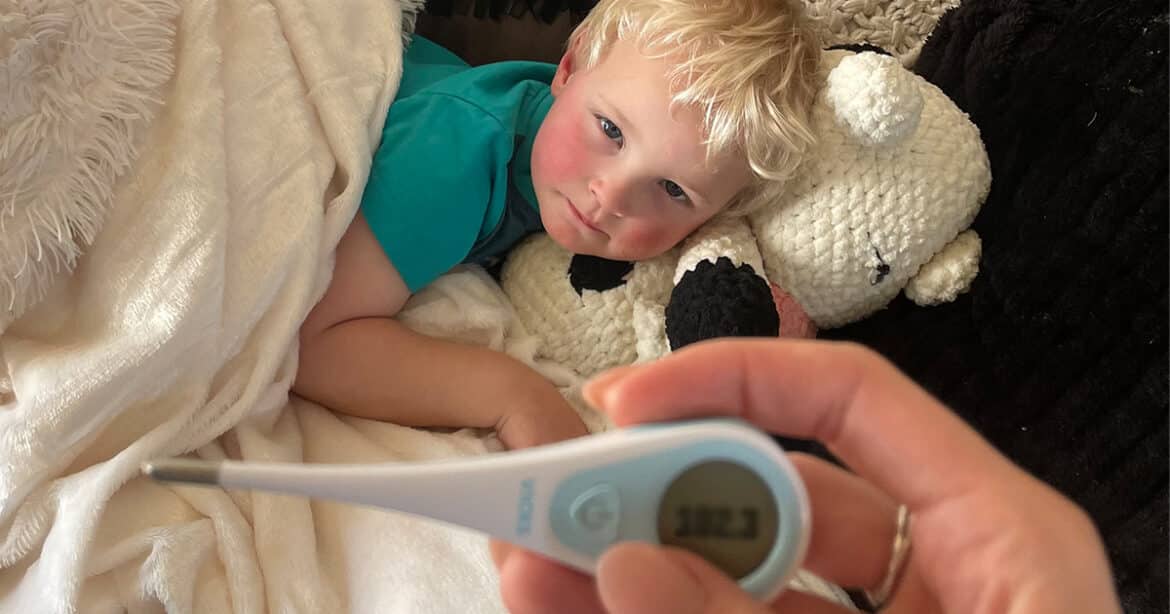SPONSORED-For anyone with children, this likely sounds familiar: your kid is feeling under the weather, their temperature is rising, they’re increasingly uncomfortable and your parental instincts kick in, making you feel like you should do everything in your power to cool them down to feel better. What you might not know though, is that your child’s fever is part of how their body activates the immune system to fight against viruses and bacteria. As we’re deep into cold and flu season, it’s worth remembering fevers are almost always a natural and helpful part of a healthy child’s response to an infectious agent.
In many cases of low-grade fevers, such as 101 degrees Fahrenheit or lower, there is no need to actively reduce the fever in most children in the first place. These mild elevations in temperature usually indicate that the body is actively fighting off an infection and in situations like these, it’s best to keep your child as comfortable as possible. It’s important to note that fevers can occur without any accompanying symptoms (like a sore throat or headache), so it may not feel like there is more than just the fever happening inside the body – but these symptoms can be catalysts. Following some tips from the Cleveland Clinic can help you approach your child’s fever based on a few key things.1
While less common, fevers can occasionally rise to or above 102 degrees Fahrenheit or last longer than 5 days. If either of these happens, or if your child is under the age of 2-3 months, you may need intervention to lower the temperature and it may be advisable to seek medical attention. Referencing these guidelines from Healthy Children, a division of the American Academy of Pediatrics will help you to decide when to call a pediatric provider, and is vital in these situations to make sure that your child has the evaluation if and when they need it.2
By understanding the role of fevers in your child’s health, you can approach the management of fevers with increased confidence and knowledge, ensuring the role of fevers is helpful – not harmful – to your child’s naturally growing immune system. And, more times than not, you can help your child at home on your own without driving long distances in the middle of the night to an Emergency Room for concern about your child’s health. However, when you’re feeling worried about your child’s health – whether it be from a fever or something else – it’s always worth it to connect with your pediatrician during their office hours or reach out to Montana Pediatrics, where pediatric-specific providers are online over nights, weekends, and holidays to make sure that you aren’t weathering a storm of uncertainty alone.
1 Cleveland Clinic. (2023, December 14). Fevers & kids: When to worry.
https://health.clevelandclinic.org/kids-fevers-when-to-worry-when-to-relax
2 Fever: When to call the pediatrician. HealthyChildren.org. (n.d.-a).
###
Ericca Berry, DNP, PNP
Pediatric Provider, Glendive Medical Center
After Hours Provider, Montana Pediatrics
Montana Pediatrics’ on-demand care is committed to providing access to pediatric-specific care for children beyond traditional primary care office hours through video-visits with Montana-based pediatric providers. Families can create an account and have easy access to pediatric care when they need it most from the comfort of their home over nights, weekends, and holidays. Together with families, providers, and partners statewide, Montana Pediatrics works toward its mission to increase access to health care and health equity for all of Montana’s children, regardless of where a family lives or their ability to pay. For more information or to request a visit after hours go to montanapediatrics.org



